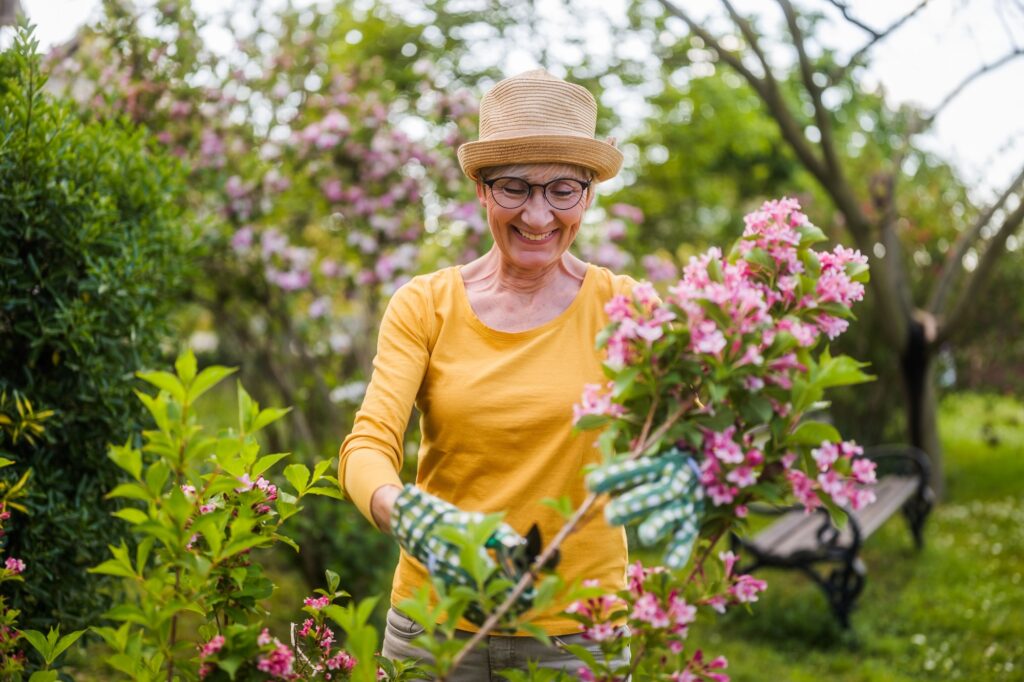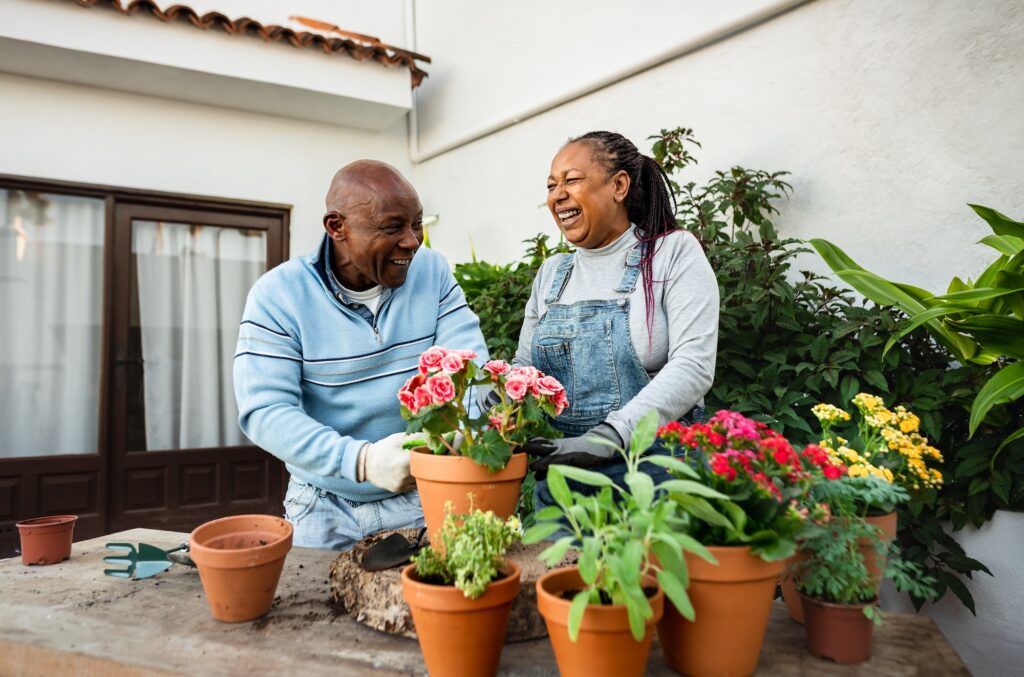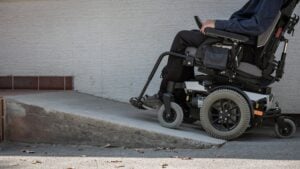Everyone can benefit from time spent outdoors and in nature, particularly the elderly. As we get older, our appetite for mowing the lawn or digging up flower beds is likely to diminish as mobility decreases, but this doesn’t mean that homeowners should pave their gardens and get rid of their plants.
There are simple steps you can take to make your garden easy to maintain and more accessible for those with reduced mobility or disabilities. In this guide, we’re looking at the benefits of maintaining a garden and how to ensure it is safe and accessible for the elderly.

The benefits of green space
Maintaining a garden is one extra thing to worry about, so why bother? Research shows that access to green spaces can dramatically improve health outcomes for individuals, particularly the elderly.
Exposure to nature can help to enhance the sense of wellbeing for individuals. These positive effects are seen in those who engage in the activity of gardening, and in those who simply enjoy time in the garden. For those on the fence about maintaining a garden for an elderly relative, the studies all appear to point to the benefits of this activity on the elderly.
Tips for a low maintenance garden
While exposure to a garden and having the opportunity to engage in gardening activities has its benefits, it could quickly become stressful if the individual feels that the garden is unmanageable. To avoid this, it’s vital to adapt the garden space to ensure it is accessible, manageable and engaging. Try these tips.
Maintain clean borders
If you are dealing with a lawn, it’s important to maintain clean borders to make it easier to cut the grass. This will help to make the garden look cleaner and will make maintenance much easier. Mulching the flower beds will inhibit weed growth and make everything look much neater. A family member or neighbour may be able to cut the lawn to keep it under control. If not, it’s a good idea to hire a gardener to cut the grass so that it doesn’t grow out of control.
Be wary of decking
Decking is a popular choice for many outdoor spaces thanks to its low maintenance design. However, decking could present a slip hazard when it becomes wet. Decking is known to develop a layer of algae which can become very slippery when wet. To avoid this, you’ll need to clean the deck and refinish it once a year to help prevent it becoming a trip hazard.
Low maintenance plants
A low maintenance garden doesn’t have to be boring or devoid of plants. There are plenty of plants that require minimal watering or maintenance that will help to brighten up the space.
Try planting things like:
- Lavender – this beautiful plant requires little to no maintenance and will deliver a bright purple bloom and lovely smell. It’s also popular with pollinators.
- Geranium – a bright addition to your garden beds that requires very little attention.
- Echinacea – these long-lasting blooms will brighten up any garden and keep the bees very happy.
- Marigold – you don’t have to do much to encourage these gold and yellow flowers to bloom.
- Cosmos – these bright and colourful daisy-like flowers will brighten up the space thanks to their long flowering seasons.
- Bay tree – a hardy little tree that can be planted in well-draining ground or a planter.
Raised flower beds
If the garden is designed for the residents to interact with it, it would be an excellent idea to include some raised flower beds. This will help those with mobility issues to continue engaging with the garden with ease. You can also invest in tools that are specially designed for those with limited mobility. These will have ergonomic handles and a longer length to help the elderly to continue engaging in their favourite hobby.

Creating paths and access
A well-maintained garden is beautiful to look at, but it should also be possible to enjoy sitting in the garden. Stone paths can be a trip hazard for the elderly, so it’s far better to create wide paths from paving stones to make it easier for residents to access areas like the garden beds. Make the paths wide enough for a wheelchair to ensure full accessibility now and in the future, even if the resident doesn’t currently use a wheelchair.
Outdoor seating areas
While they are enjoying their time in the garden, it’s nice to have a spot where they can sit outside and enjoy the scenery. Garden benches or a table and chair set can be positioned in a pleasant spot underneath a tree so the resident can enjoy a spot of shade when they sit outside. Make sure the seating area is easily accessible and free from trip hazards.
The furniture also needs to be sturdy and unlikely to tip over. Those with mobility issues might struggle with bistro-style garden seating or furniture designed to fold. Instead, look for sturdy furniture that can be left outside without worrying about the elements.
Final thoughts on creating a low maintenance garden for the elderly
There are clearly benefits to maintaining a garden and encouraging elderly residents to engage with this activity. To stop the activity from becoming overwhelming or dangerous, there are simply ways you can enhance your garden design to be better adapted to elderly residents and their needs. Simplifying the garden design is often the best way to meet the needs of the resident without feeling the need to make the space boring or unengaging.






